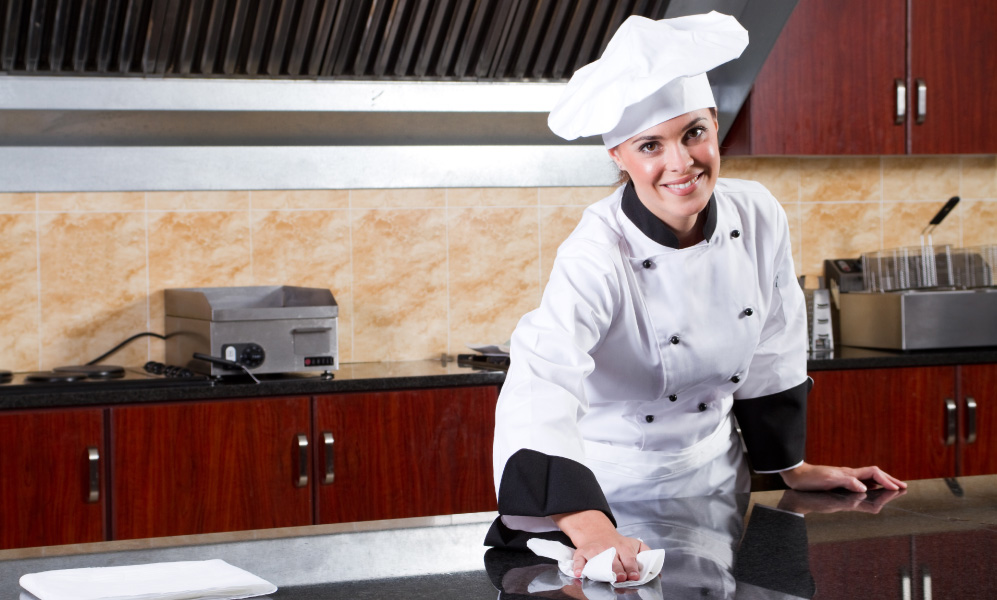The Ultimate Guide to Eating Hummus Like a Pro
If you think hummus is just a dip, you’re in for a delightful surprise. This creamy, flavourful delight is more versatile than most people realise,
The kitchen is a producing ground for bacteria and germs. Your kitchen may look tidy and clean, but any food preparation area is known to attract microorganisms that can cause foodborne illnesses. Kitchen sanitation is vital for good health but Sometimes microbes, especially faecal bacteria contaminate too fast within food items and cause spoilage.

The gas stove is one area that can become a breeding ground for infections over time. Experts recommend cleaning the stove after every meal with a mixture of soap or detergent and water. Soak burners and lids in warm soapy water for 30 minutes. Scrub buildup from burner heads and caps with a non-abrasive sponge or old toothbrush. This simple practice is a good way to keep your kitchen and the food you prepare clean and sanitary.
Kitchen countertops and dishes are where vegetables, fruits, and other ingredients are stored before washing. The kitchen tiles must be laid out to avoid contamination of the products with germs during the preparation of the recipes. Use a mixture of saltwater and lemon for best results. Gently remove any food residue with a spatula or scraper. Make sure to clean the countertops after cleaning so that they are completely dry.
For the food safety of the kitchen, it is important to sanitize utensils and vessels in which food is stored. Mostly, lentils/beans and flours are frequently contaminated with pests, which can cause various foodborne illnesses. It is essential to verify that utensils are cleaned after use with soap or detergent-gel. Sanitize cutlery, metal utensils, pots, and pans by boiling in water for 10 minutes. In this case, chlorine bleach should not be used because it reacts with many metals and causes them to blacken. They should be fully dry before you put the food in them, to lessen spoilage.
The kitchen floor can be one of the dirtiest and most germ-contaminated areas in the home. Just vacuuming and scrubbing may not be essential for cleaning your floor. A steam mop, like The Shark, is a good kitchen cleaning tool that uses a mixture of steam and floor cleaner to clean the floor.
Food Mixer, toasters, freezers, microwaves, etc. – any equipment utilized in the kitchen should be entirely hygienic. The microwave in specific can frequently become dirty. When sanitizing kitchen utensils and equipment, use boiling water or bleach. Specialists recommend using vinegar and a water mixer. Just microwave it in the bowl for a couple of minutes and by using a swab we remove all the stains.
For example:
When it comes to food safety, not only the surrounding areas, but the food itself must be of the highest quality. To combat the risk of food contamination, it is advisable to take the necessary precautions, thoroughly cleaning vegetables and other food items before consumption. Home remedies may not be effective in this case.
The main way to spread contamination in the kitchen is with our hands. People often do not wash their hands before preparing food. And people generally do not wash their hands between handling potentially contaminated foods, such as meat, and other foods less likely to be contaminated, such as vegetables. This cross-contamination is the leading cause of foodborne illness.
Food safety and hygiene practices:
Safety measures in the handling, cooking and storage of food are essential to prevent foodborne illness. At all stages of food preparation, follow the four steps to keep food safe:
Some Important Tips are:
1. Purchasing:
2. Preparation:
3. Cooking:
4. Refrigeration:
5. Serving:
6. Leftovers:
7. Storage:
If you think hummus is just a dip, you’re in for a delightful surprise. This creamy, flavourful delight is more versatile than most people realise,
Fellow coffee lovers in Malaysia are embracing a convenient method to enjoy their favourite coffee shop quality drinks at home: coffee capsules. These pre-packed pods
Healthy snacking is crucial for a balanced diet, especially for weight management in Malaysia. While many Malaysians enjoy snacks, not all are healthy. Traditional options
Malaysia’s coffee culture is flourishing, with coffee enthusiasts seeking high-quality brews that rival café experiences. Among the rising trends, coffee capsules have emerged as a
Tel: +603-5569 2318
Fax: +603-5569 2208
Email: hello@sanglafoods.com
Lot 4, Jalan Peguam U1/25A, Hicom Glenmarie Industrial Park,
40150 Shah Alam, Selangor, Malaysia